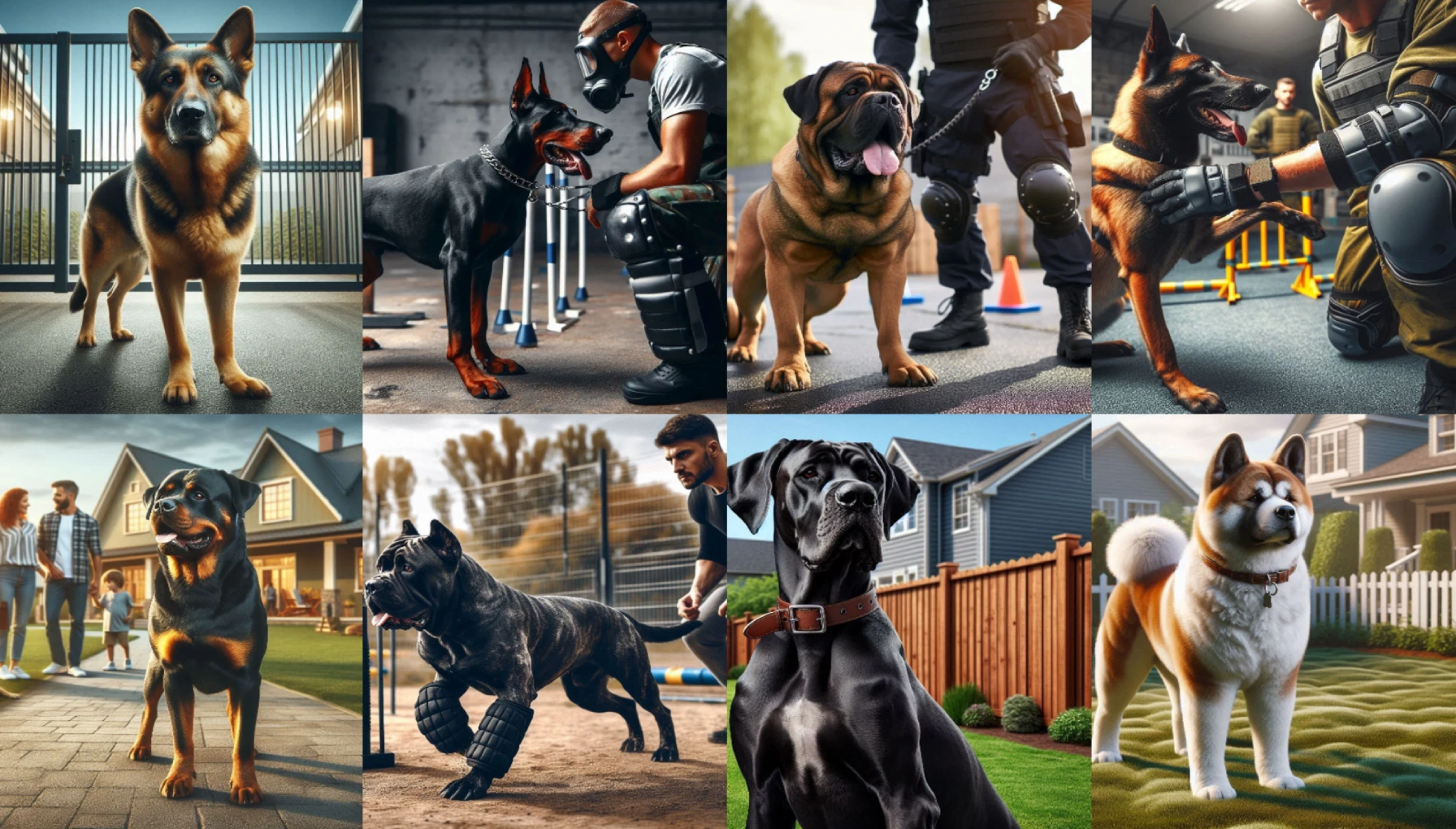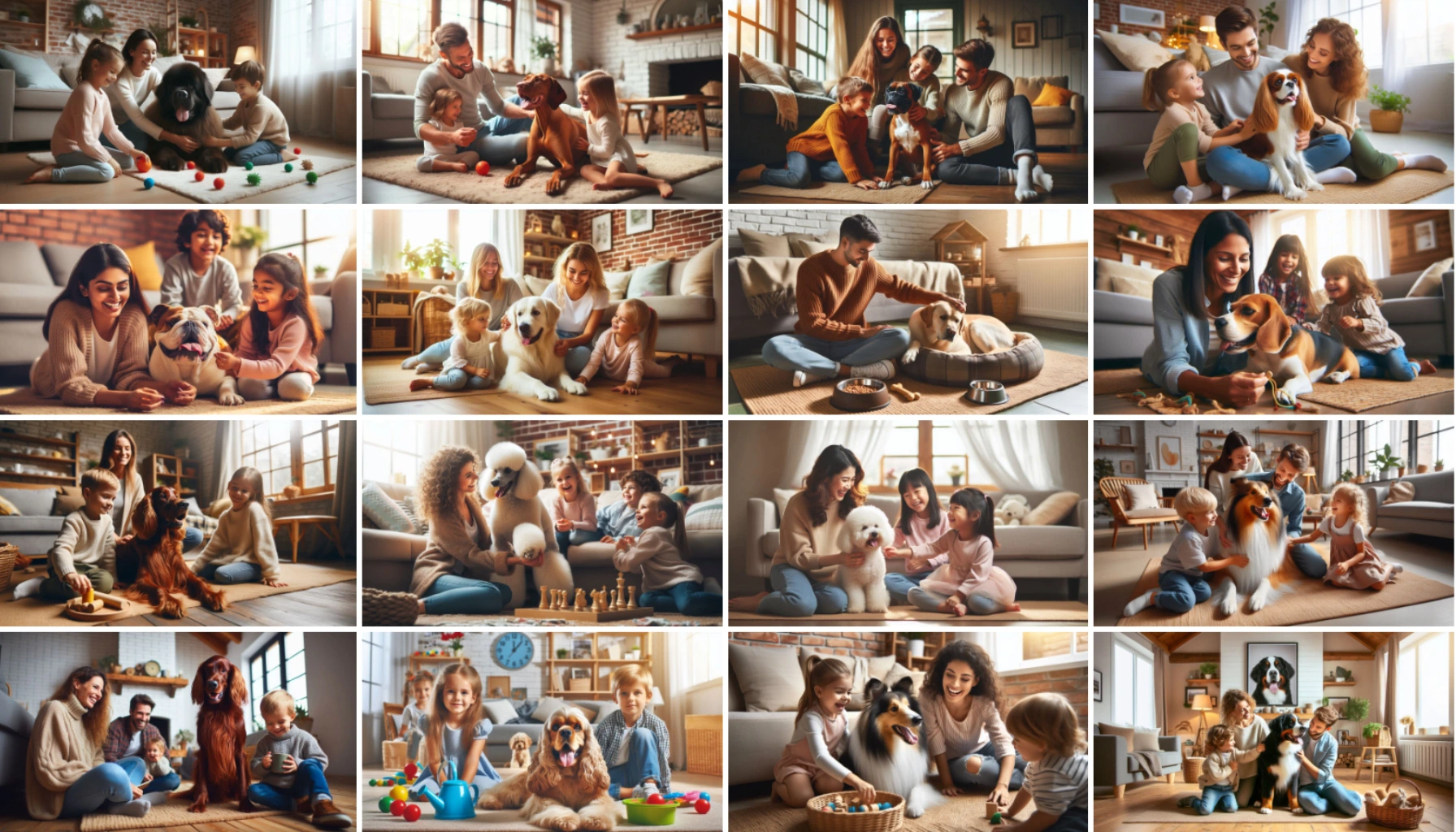Table of Contents
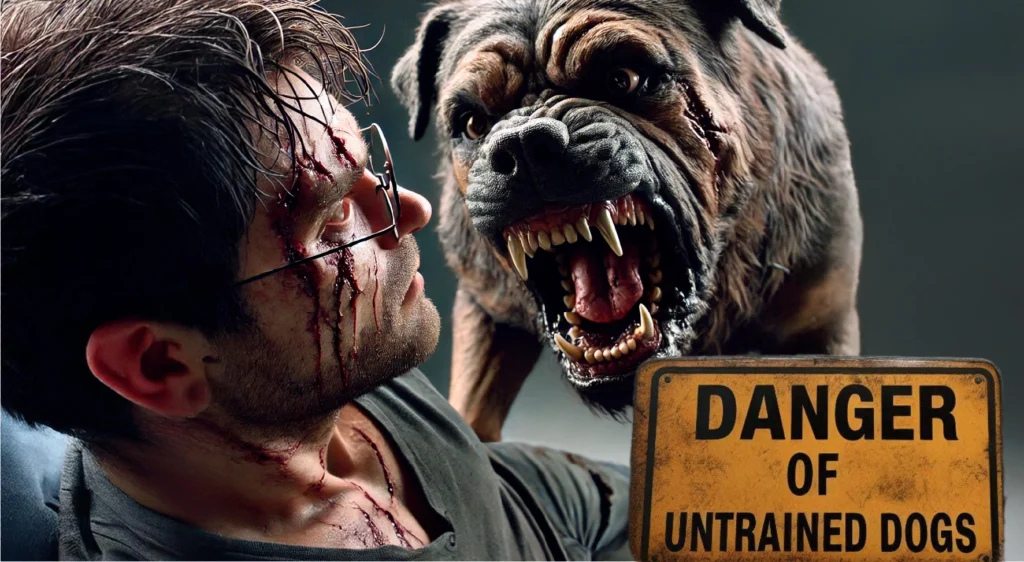
Danger of Untrained Dogs: The Risks of Untrained Dogs
Dogs have long held the title of “man’ best friend,” known for their loyalty, companionship, and protection. However, this cherished relationship can become strained or dangerous when dogs lack proper training and structure. While many pet owners shower their dogs with love, they often overlook the critical need for consistent training to ensure the safety of both the dog and those around them. Untrained dogs can display unpredictable behavior that may lead to accidents, aggressive outbursts, and, in extreme cases, attacks on humans or other animals.
Recent statistics underline this concern: in the United States alone, over 4.5 million people are bitten by dogs each year, with children being the most common victims. Many of these incidents are preventable with early and proper training. In this article, we will explore the dangers of untrained dogs, the significance of dog training, and essential steps every dog owner should take to ensure a safe and harmonious relationship with their canine companion.
Understanding the Dangers of Untrained Dogs
Untrained dogs can pose a range of behavioral problems that escalate into dangerous situations. From aggression to anxiety, an untrained dog may act unpredictably, leading to harm for the dog, the owner, or others.
Aggression and Frustration
Untrained dogs are more prone to react aggressively when they feel threatened or frustrated. For example, a dog that hasn’t been taught how to respond to strangers may lash out if it perceives someone as a threat. Similarly, dogs that aren’t accustomed to following commands might become frustrated and act out, biting or lunging at others.
Disobedience and Confusion
When dogs don’t understand their owner’s commands, they may become confused in everyday situations. A dog without proper leash training might bolt into traffic, endangering both itself and its owner. Or, an untrained dog may jump on guests, misreading their excitement as an invitation to play, potentially leading to injury. These behaviors, while common in untrained dogs, highlight the risks associated with a lack of structure.
Real-Life Examples
There are countless stories of untrained dogs causing harm, often triggered by fear or misunderstanding. For instance, a dog may attack a child who accidentally steps on its tail, or it may bite a visitor who enters its home without the dog being socialized to understand that strangers aren’t threats. These scenarios highlight how even well-meaning owners can unintentionally encourage harmful behavior by not prioritizing early training.
Why Training Is Crucial for a Safe and Happy Dog
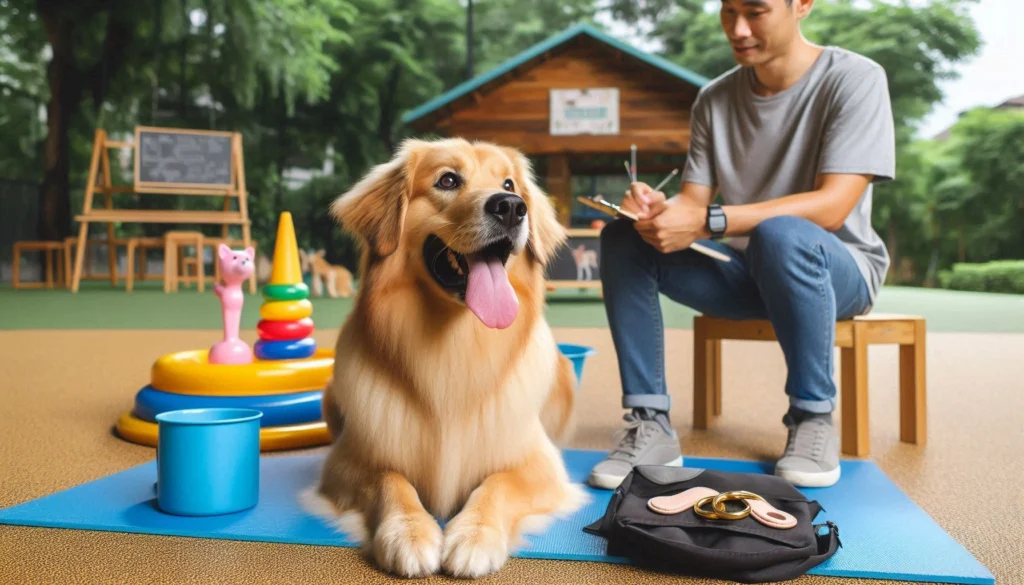
Training is an essential part of raising a well-adjusted, happy, and safe dog. It benefits not only the dog’s behavior and safety but also its mental well-being, helping create a bond of trust and understanding between the dog and its owner. A well-trained dog is more confident, less stressed, and able to navigate the world without fear or confusion, making life easier and more enjoyable for everyone involved.
Building Structure and Safety
Dogs thrive on structure and routine, much like children. Without clear boundaries and rules, a dog can become confused or stressed, leading to behavioral problems. Training provides dogs with a sense of security by clearly defining their role within the household. Basic commands like “sit,” “stay,” and “come” are not just about obedience but are critical for safety. A dog that understands these commands is less likely to run into dangerous situations, like chasing after cars, confronting strangers, or getting lost. Structured training also helps establish a positive hierarchy where the dog knows its owner is in charge, reducing behavioral problems that stem from dominance or insecurity.
Impact on Mental Health
Lack of training can severely affect a dog’s mental health. Dogs that are left untrained often develop anxiety or fear because they don’t understand how to behave or react in different situations. For instance, an untrained dog might bark uncontrollably when encountering new people or other dogs due to fear or insecurity. They might also act out aggressively because they haven’t learned how to interact appropriately with their environment. Proper training, especially socialization, exposes dogs to new experiences in a controlled manner, helping them develop the confidence to handle different environments, people, and animals. This reduces anxiety and makes the dog feel more comfortable and secure in various situations.
In contrast, a well-trained dog feels confident and secure, knowing what to expect from the world and how to respond. This mental stability leads to a happier, more balanced pet. Socialization is a key aspect of this, as it teaches dogs to interact calmly and confidently with other dogs, strangers, and new environments, preventing fear-based aggression or reactivity.
Key Training Goals
Training is about far more than teaching your dog to perform tricks. The primary goal of training is to ensure the dog’s safety, create a structured and predictable environment, and strengthen the bond between the dog and its owner. Core training skills every dog should learn include:
- Basic Obedience: Commands like “sit,” “stay,” “come,” and “leave it” are the building blocks of a well-trained dog. These commands ensure your dog can navigate the world safely, preventing them from getting into dangerous situations or engaging in harmful behavior.
- Leash Walking: Teaching your dog to walk calmly on a leash is vital for both safety and enjoyment. A dog that pulls on the leash or lunges unpredictably can cause accidents or end up in dangerous situations, like running into traffic or approaching aggressive dogs. Proper leash training ensures your dog walks calmly by your side, making outings enjoyable and safe for both of you.
- Socialization: Exposing your dog to different environments, people, and animals is crucial in preventing anxiety, aggression, and fear. A well socialized dog is less likely to act out or feel stressed in new situations, allowing you to take your dog into public spaces without worry. Socialization also helps dogs develop positive interactions with other dogs, reducing the risk of fights or aggression.
Training for a Lifelong Bond
Beyond safety and behavior, training deepens the bond between a dog and its owner. Dogs are pack animals by nature and look to their owners for guidance and leadership. When you invest time in training, you are not only teaching your dog how to behave but also establishing trust and communication. A dog that understands its owner’s commands feels more connected and secure, leading to a stronger relationship. This bond is vital for long-term happiness, as a well-trained dog is more likely to listen, cooperate, and be a loving, well-adjusted companion.
Top Common Behavioral Issues with Untrained Dogs

Untrained dogs often exhibit a range of behavioral problems that can make life challenging for both their owners and those around them. These issues not only create tension in the household but can also pose safety risks to people, other animals, and even the dog itself. Without proper training and boundaries, problem behaviors may escalate over time, turning minor annoyances into serious dangers. Below are some of the most common behavioral issues seen in untrained dogs, along with their potential consequences.
1. Excessive Barking
One of the most prevalent issues in untrained dogs is excessive barking. Dogs bark for a variety of reasons alerting owners to potential threats, seeking attention, or expressing boredom or anxiety. However, without proper training, barking can become constant and disruptive. A dog that hasn’t learned to quiet down on command may disturb neighbors, cause stress for their owners, or even signal deeper emotional issues such as separation anxiety. Excessive barking is often a sign that the dog feels insecure or overwhelmed, and it can lead to strained relationships with neighbors or community members, especially in densely populated areas.
2. Leash Pulling
Leash pulling is another frequent issue with untrained dogs. Dogs that haven’t learned how to walk calmly on a leash may lunge or pull uncontrollably, which can put both the dog and its owner in dangerous situations. A dog pulling suddenly into traffic, chasing after other animals, or approaching strangers unexpectedly can lead to accidents. This problem is especially serious for larger or stronger dogs, where the owner may struggle to maintain control, increasing the risk of injury for both the dog and those nearby. Proper leash training is crucial to ensuring safe, peaceful walks, especially in busy urban settings or high-traffic areas.
3. Biting and Jumping on Guests
Jumping on guests is a common problem among untrained dogs. While it may seem playful or affectionate, it can quickly become a serious issue, particularly around children, the elderly, or those who are unfamiliar with dogs. A dog that jumps on visitors can accidentally knock them over, causing injury. Furthermore, if a dog is not trained to control its excitement, jumping may escalate into more aggressive behaviors like nipping or biting. Biting, whether out of playfulness, fear, or aggression, is especially concerning, as it can result in serious harm and legal consequences for the owner. Even a single incident of biting can damage trust between the dog and others, making socialization more difficult.
4. Aggression Towards Other Dogs or People
Aggression is one of the most alarming and dangerous behavioral issues in untrained dogs. Dogs may become aggressive for various reasons, including fear, territoriality, dominance, or guarding food and toys. Unchecked aggression can result in fights with other dogs, posing a danger to both animals involved.
Aggressive behaviors towards humans, whether it’s growling, snarling, or outright biting, can lead to severe injuries and legal liabilities for owners. Aggression is often exacerbated by poor socialization or lack of clear boundaries. Without proper training, an aggressive dog can become a serious threat, making it difficult to take them out in public or even have guests in the home. Early intervention and professional training are critical in addressing these behaviors before they escalate.
5. Separation Anxiety and Destructive Behavior
Another common issue with untrained dogs is separation anxiety. Dogs that have not been taught how to be alone or self-soothe may exhibit destructive behaviors when left unsupervised, such as chewing furniture, scratching doors, or excessive barking. This anxiety-driven behavior often stems from the dog’s dependence on their owner for comfort, and without proper training, it can become overwhelming for the dog. Destruction of household items isn’t just inconvenient; it can also be harmful to the dog if they chew on or swallow dangerous objects. Training your dog to feel secure when left alone and providing appropriate outlets for their energy can help mitigate these behaviors.
6. Lack of Recall (Ignoring Commands to Return)
A dog that doesn’t respond to basic recall commands, such as “come” or “stay,” can quickly find themselves in dangerous situations. If a dog is allowed off leash but hasn’t been properly trained to return when called, they may run into traffic, get lost, or confront other animals. This lack of recall is especially problematic in environments with many distractions, such as parks or outdoor areas. Without a strong recall, owners are unable to control their dog’s movements effectively, making walks or playtime risky.
By understanding and addressing these common behavioral issues, dog owners can prevent potential problems from spiraling out of control. Training not only enhances the dog’s well-being but also improves the safety and harmony of their environment. Whether addressing barking, leash pulling, or aggression, the importance of early and consistent training cannot be overstated.
How Lack of Training Can Lead to Dogs Attacks
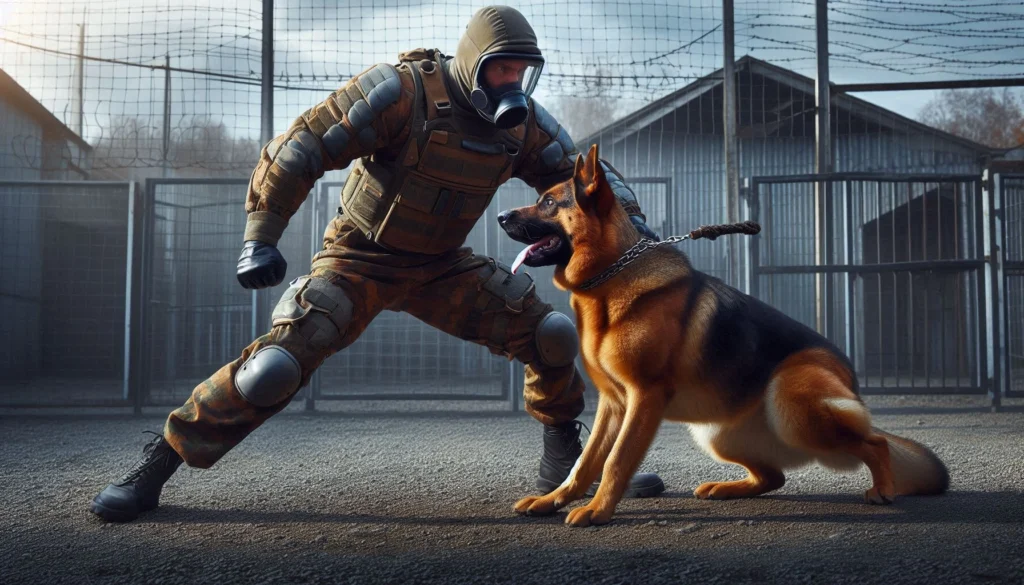
The consequences of not training a dog can be severe, with one of the most serious risks being dog attacks. Many dog attacks occur due to misunderstandings between dogs and humans, which could have been avoided with proper training. A dog that hasn’t learned how to behave in different situations may react out of fear, anxiety, or confusion, leading to potentially violent incidents. Training is essential to prevent these types of reactions and ensure the safety of both the dog and those around them.
Misinterpreted Signals
Dogs rely heavily on body language to communicate, and when they lack proper socialization and training, they may misinterpret human gestures or actions as threats. For example, a child running toward a dog out of excitement may be perceived by the dog as an aggressive approach. Without training to remain calm or assess the situation properly, the dog may react defensively, even attacking out of fear or perceived danger. Similarly, a person raising their arms to wave or shout may unintentionally signal aggression to an untrained dog. These miscommunications can lead to bites or attacks, especially if the dog feels cornered or overwhelmed.
In contrast, a well-trained dog understands how to interpret different human behaviors and can distinguish between playful actions and real threats. They are more likely to remain calm or retreat rather than lash out, preventing accidents that can have severe consequences.
Preventable Attacks
Many dog attacks could be entirely preventable with proper training. Dogs that are trained to remain calm in stressful or unfamiliar situations are less likely to react with aggression. Training helps dogs understand that things like loud noises, new environments, or strangers are not inherently dangerous. For instance, a dog that is startled by fireworks or a sudden loud noise might react with fear or aggression if they haven’t been exposed to such situations through training. However, a dog that has been trained to handle these stressful moments is far more likely to remain calm or look to its owner for guidance instead of acting out aggressively.
Breed Considerations
While any dog, regardless of breed, can become dangerous without proper training, certain breeds with strong protective or territorial instincts require even more rigorous training. Breeds that are naturally more protective, such as Rottweilers, German Shepherds, or Pit Bulls, may have a stronger tendency to guard their family or territory. Without training, this protective instinct can turn into aggression, especially if the dog perceives someone or something as a threat.
However, it’s important to understand that aggression is not exclusive to any specific breed. Any dog can become dangerous if they lack socialization and discipline. Even smaller or typically non-aggressive breeds can lash out if they feel threatened or are not taught how to properly interact with humans and other animals. Training plays a crucial role in managing these natural instincts, ensuring that the dog can distinguish between real threats and harmless situations.
Proper training for all breeds, particularly those with strong protective or guarding tendencies, focuses on teaching the dog when to remain calm and how to respond to unfamiliar people or situations. Early socialization and continued reinforcement throughout the dog’s life can significantly reduce the chances of aggression or attacks.
Understanding Triggers and Reactions
Untrained dogs are often more reactive because they haven’t learned how to cope with stress or unfamiliar stimuli. A dog that isn’t accustomed to being around other dogs, for example, might react aggressively if approached by one in the park. Similarly, dogs that haven’t been exposed to different environments may feel nervous or trapped in new situations, leading to fear-based aggression. Training helps desensitize dogs to these triggers, teaching them how to react calmly rather than lashing out.
The Role of Socialization in Preventing Aggression
Socialization plays a critical role in preventing aggression and fear-based behaviors in dogs. Untrained dogs that are not socialized with other animals, people, or different environments are more likely to develop fears and, subsequently, aggressive tendencies. Socializing your dog from an early age helps them become familiar with a variety of situations, reducing the risk of fear-based aggression.
For example, a dog that has been regularly exposed to different environments, like parks, pet-friendly stores, and urban areas, is less likely to react aggressively when encountering new stimuli. These dogs learn that new experiences are not threats but opportunities for interaction and exploration.
Socialization also includes interaction with other dogs. A dog that learns how to behave around other dogs at an early age is less likely to display dominance or fear-based aggression. This not only protects other dogs but also makes your pet more enjoyable to take to dog parks or pet-friendly events.
Professional Training: When to Seek Help
While many dog owners can handle basic training on their own, some behavioral issues may require professional intervention. Recognizing when to seek help is crucial, especially with large or strong breeds that can pose a physical threat if not properly managed.
Signs that professional training may be necessary include:
- Persistent disobedience: If your dog consistently ignores commands or refuses to listen, it may indicate a deeper behavioral issue.
- Aggressive behavior: If your dog shows signs of aggression, such as growling, snapping, or biting, it’s time to consult a professional.
- Difficulty controlling the dog in everyday situations: If you find it hard to manage your dog in public, during walks, or around other animals, a trainer can help address these issues.
Professional training comes in various forms, including basic obedience classes, one-on-one sessions with a trainer, or consultations with a certified dog behaviorist for more serious concerns. These professionals can tailor their approach to your dog’s specific needs, helping to resolve issues that might be beyond the scope of the average pet owner.
Essential Training Tips for Every Dog Owner

Every dog owner should prioritize training to ensure their pet is well behaved, safe, and enjoyable to be around. The approach to training can vary based on factors like breed, age, temperament, and the specific environment the dog is raised in. However, certain core principles apply universally and can set both you and your dog up for success.
Start Early:
It’s much easier to teach puppies new behaviors because they are naturally curious and eager to please. Early training can prevent the development of bad habits. Puppies are also at an ideal age for socialization, which is crucial in shaping their interaction with other dogs, people, and new environments. If your dog is older, don’t worry older dogs can learn too, though it might take a bit more time and patience.
Use Positive Reinforcement:
Positive reinforcement is one of the most effective and humane training techniques. It involves rewarding your dog for good behavior with treats, praise, or play. This method helps dogs associate good behavior with positive outcomes, encouraging them to repeat it. For instance, if your dog sits when asked, reward them immediately with a treat or praise. Over time, they’ll understand that sitting on command leads to something enjoyable. Avoid punishment-based training, as it can lead to fear and anxiety, ultimately damaging the bond between you and your dog.
Be Consistent:
Dogs thrive on routine and consistency. When training, it’s essential to use the same commands, cues, and rewards consistently. If you switch up the words or gestures, you can confuse your dog, making it harder for them to understand what you want. This is especially important in households with multiple family members – everyone should be on the same page regarding the commands and training methods used.
Patience is Essential:
Training requires time, effort, and patience. Your dog may not understand every command right away, and it’s essential to remain calm and persistent. Pushing your dog too hard can lead to frustration for both of you. Remember that setbacks are a natural part of the learning process, and every dog learns at their own pace. Celebrate small victories along the way and remain committed to the long-term goal of having a well trained companion.
Focus on Short, Frequent Sessions:
Dogs, especially young puppies, have limited attention spans. Short, focused training sessions of 5-10 minutes are often more productive than longer sessions where they may lose interest. Multiple short sessions throughout the day will keep your dog engaged and excited about learning. Incorporate fun activities into these sessions to keep things enjoyable for both of you.
Socialization is Key:
Socialization is an essential aspect of training that is often overlooked. Exposing your dog to different people, environments, and other animals in a controlled and positive way helps reduce fear and anxiety, making them more confident and better behaved. Socialized dogs are less likely to react aggressively to unfamiliar situations and are generally more relaxed in new environments.
Stay Calm and Assertive:
Dogs are sensitive to their owner’s emotions and can pick up on your energy. If you’re anxious, stressed, or inconsistent during training, your dog may mirror those emotions. Stay calm, assertive, and confident when giving commands or correcting unwanted behavior. Your dog will respond more effectively when they feel that you are in control and leading the situation.
Use Leash Training for Control:
Teaching your dog to walk calmly on a leash is an essential part of their training, especially when it comes to public spaces. Leash training gives you control over your dog’s movements and can prevent them from lunging at strangers, other dogs, or dangerous objects. Begin by rewarding your dog for walking by your side without pulling and gradually introduce more distractions as they improve.
Maintain Regular Training Throughout Life:
Training doesn’t end once your dog has learned basic commands. Just like humans, dogs benefit from regular mental stimulation throughout their lives. Incorporating training into your daily routine, even after your dog has mastered the basics, keeps their mind sharp and reinforces good behaviors. You can also introduce advanced tricks or skills to challenge them further.
By applying these essential training tips, you’ll build a strong, trusting relationship with your dog, and foster a bond that keeps them safe, happy, and well-mannered. Whether you’re starting with a puppy or an older dog, training is a rewarding journey that pays off for both you and your pet.
The Consequences of Not Training a Dog
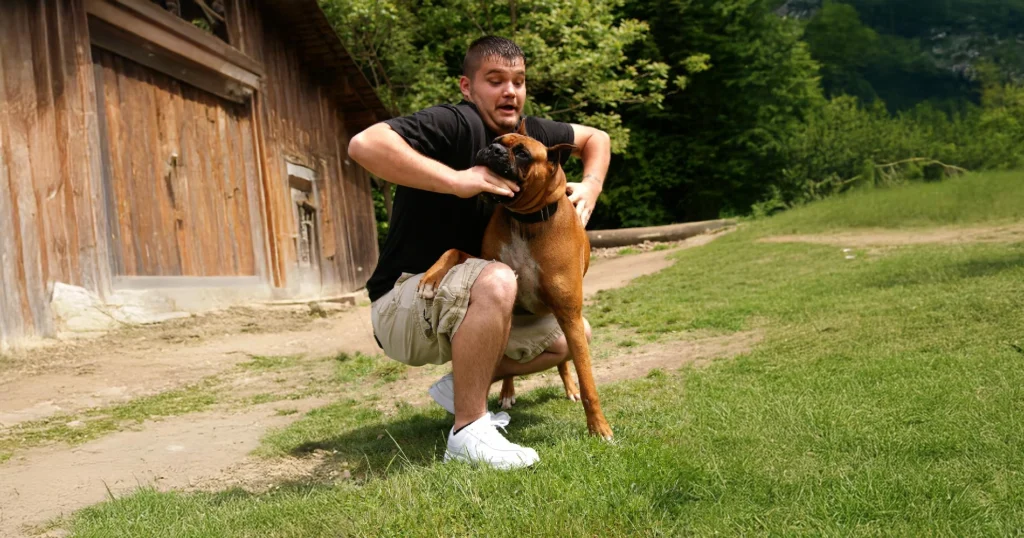
The consequences of neglecting to train a dog extend beyond just frustrating behavior. Untrained dogs are more likely to be rehomed, surrendered to shelters, or even euthanized due to behavioral issues. Many dogs end up in shelters not because they are inherently bad but because they were never given the proper training to thrive in a home environment.
An untrained dog also faces restrictions on where it can go and how it can interact with others. For example, many public places, such as parks, beaches, and cafes, only welcome well-behaved dogs. An untrained dog might miss out on these enriching experiences, leading to a lower quality of life.
In the worst-case scenario, a dog’s dangerous behavior, such as biting, could lead to it being classified as a liability, putting it at risk of euthanasia. Therefore, training is not just about good manners it’s a vital part of ensuring a dog’s long-term safety and happiness.
Final Thoughts: Training Is a Lifelong Commitment
Training is a vital part of dog ownership that should not be overlooked. It ensures that dogs can safely integrate into a family and society, making life better for both the dog and the owner. By investing time and effort into consistent training, owners can prevent dangerous situations and create a lifelong bond of trust and affection with their pets.
Conclusion
Training is essential for every dog, regardless of breed or age. A well-trained dog is not only safer but also happier and better equipped to thrive in the human world. By making training a priority, dog owners ensure a long, fulfilling life for their canine companions, filled with love, trust, and mutual respect.
FAQs
Can older dogs still be trained effectively?
Yes, older dogs can absolutely be trained. While puppies may learn faster due to their early stage of development, adult dogs are still capable of learning new commands, behaviors, and proper socialization. The key with older dogs is patience and consistency, as they may have to unlearn some bad habits before they can adopt new ones. Positive reinforcement methods, like treats and praise, work particularly well with older dogs, helping them adjust to training at their own pace.
What are the consequences of not socializing a dog early?
A lack of socialization in a dog can lead to behavioral issues such as anxiety, fear, and aggression. Dogs that are not exposed to different environments, people, and animals during their formative months may become reactive to new experiences later in life. This can make everyday activities, like going for a walk or visiting public spaces, stressful and potentially dangerous. Socialization from an early age helps prevent these problems, ensuring the dog feels comfortable and confident in various situations.
How can I tell if my dog needs professional training?
If your dog exhibits persistent disobedience, shows aggression, or struggles with behaviors like biting, excessive barking, or leash pulling despite your best efforts, it may be time to consult a professional trainer. Other signs include difficulty controlling the dog in public, food or toy guarding, or fear of strangers or other animals. Professional trainers can provide tailored strategies to address these issues and ensure your dog becomes well-behaved and manageable.


